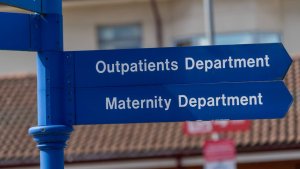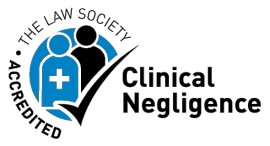Birth Injuries to Mother
Claim Compensation for Birth Injuries to Mother
Find out how our birth injuries to mother negligence solicitors can help you with your claim.
Birth Injury to Mother Claims
Around 9 in 10 women suffer some form of injury during childbirth. Most are a natural part of having a baby, such as minor tears and bruising that heal naturally soon after the baby is born. Some birth injuries are more serious and can have long-term consequences, both physical and psychological. When these injuries are caused by medical mismanagement, it can result in a compensation claim.
Medical negligence claims for maternal birth injuries
Doctors and midwives have a duty of care to ensure that birthing mothers are kept safe during the delivery process. Unfortunately, mistakes and oversights can occur, resulting in unnecessary harm to mothers. The effect of childbirth injuries are very personal, but can include:
- Physical injuries that cause changes to bodily functions or long-lasting pain
- Psychological trauma, such as postnatal depression
- Time away from work and additional medical expenses
- Difficulty bonding with the baby
If you are worried about the care you received during childbirth, you may be entitled to claim compensation. Our birth injury specialists understand what you’re going through and can provide expert guidance and advice.
Types of birth injuries to mothers
Here are the most common types of birth injuries to mothers and their implications.
Vaginal tears and failed episiotomy
Vaginal tears can occur naturally during childbirth when the vagina does not stretch enough to accommodate the baby’s head. Tear injuries range in severity:
- First-degree tears are skin-deep and self-healing
- Second-degree tears are deeper and may require stitches, but normally will heal in a few weeks
- Third and fourth-degree tears are more serious and can involve damage to surrounding tissue, including the rectum or anal sphincter. They can lead to incontinence, scarring, pain and rectovaginal fistula, where the tear allows faeces to pass through into the vagina.
Medical professionals use a range of interventions to reduce the risk of major tearing. A common option is an episiotomy, a controlled incision that creates more room for the baby to pass through and thus reduces the risk of an uncontrolled tear. However, if the episiotomy is done incorrectly, it can lead to further tears and increased complications.
It is also possible for a tear to go unnoticed, leading to long-term pain or incontinence problems.
Care of the perineum forms part of the postnatal follow-up. If a tear or episiotomy is not properly managed, then the mother may need another procedure to correct the damage, causing additional stress and discomfort.
Postnatal depression and post-traumatic stress disorder
The birth process can be an extremely traumatic experience for some mothers. A negative experience, even if not directly related to medical negligence, can lead to postnatal depression (PND) or postnatal post-traumatic stress disorder (PTSD). These conditions can be serious and long-lasting if left untreated.
UK guidelines recommend that midwives and GPs screen for PND, PTSD and related mental health conditions. It’s common for women to feel a bit down in the first few days after giving birth, but medical professionals should be on the lookout for signs that go beyond the ‘baby blues’ and signpost women to the correct treatment. Symptoms include sleeplessness, lack of energy, feeling anxious, appetite changes, feelings of guilt and self-blame and indifference to the baby.
Post-Partum Haemorrhage
Post-partum haemorrhage (PPH) is an excessive loss of blood (more than 1500mls) after childbirth. There are two types:
- Primary PPH where about a pint of blood is lost within 24 hours of the baby’s birth. This happens in about 5% of pregnancies.
- Secondary PPH which causes continuous heavy bleeding and affects less than 2% of women. It is normally the result of uterine damage – for example, where a mother was allowed to push for too long so the uterus is too weak to contract back once delivery is complete. It can also be caused by an infection during or immediately following delivery.
PPH can be life-threatening. Medical staff are trained to spot the signs, such as continuous bleeding, faintness and a rapid heart rate, and treat it quickly.
Ruptured uterus
A ruptured uterus happens when the wall of the uterus tears during delivery. It commonly occurs in women who have had a previous caesarean section and then go on to have a vaginal birth. It is also possible but rare for ruptures to happen without any prior surgery.
Ruptured uteruses present an obvious risk to both the mother and baby, as the mother may lose a lot of blood and the baby can be cut off from a vital oxygen supply. Medical professionals must monitor both closely during delivery and be prepared to act quickly if a rupture is suspected. An urgent caesarean section and surgical uterine repair may be necessary, and the mother may need a blood transfusion. A hysterectomy may be recommended in very severe cases.
Pelvic organ prolapse
The most common type of pelvic organ prolapse is the descent of the uterus and cervix. This happens when the ligaments that hold the organs in place become weakened, usually due to a long and difficult labour. Prolapse is not usually life-threatening but can be uncomfortable and cause difficulty with normal activities and pain during sex. Other organs such as the bladder, bowel or rectum can descend in some cases.
Many prolapses can be managed through pelvic floor exercises and other non-invasive treatments. However, a serious prolapse may require surgical repair or removal of the womb, which means the woman can no longer have children.
Medical negligence claims for maternal birth injuries
If you have suffered a birth injury and believe it was due to improper care, you may have a claim for compensation. To make a claim, you need to show that a medical professional breached their duty of care, leading to the injury. This could be due to:
- Mistakes made in diagnosis, monitoring or treatment
- Failing to act on signs of distress
- Inappropriate use of forceps, ventouse or surgery
- Failing to deliver appropriate advice or information during follow-up appointments.
The first step is to get advice from a specialist birth injury solicitor. The team at Osbornes will review your case and advise you on the best course of action for getting the compensation you deserve. We understand the complexity of birth injury negligence cases and will help you to get the recognition and justice you need.
Contact us today
For a free initial conversation call 020 7485 8811
Email us Send us an email and we’ll get back to you
Stephanie Prior is head of the clinical negligence department at Osbornes Law. She acts on a wide range of issues, including claims for brain injuries sustained at birth and delays in diagnosis. She frequently represents clients in fatal claims involving surgical error.
"Stephanie Prior is the leading spokesperson on the high profile maternity scandal cases involving many NHS Trusts."
Stephanie has developed a particularly strong reputation for her handling of birth injury claims, as well as cases concerning surgical negligence and delays in surgery.
Birth Injury Claims Insights & Client Stories VIEW ALL
- 8.9.2022
Poor interpretation of CTG can result in stillbirth...
Poor interpretation of a Cardiotocograph, more commonly known as a CTG, is a leading cause of stillbirth and brain injuries...
Read more - 23.2.2022
Women from ethnic minorities experience worse maternity care
It has been reported today that the government has set up a new task force to look into why there...
Read more - 1.7.2021
Stillbirth following water birth at home
Nicholas Leahy acted for a young woman who had a water birth at home and two midwives were allocated to...
Read more - 13.10.2020
Parental Bereavement Leave & Pay
Leave and pay when a child dies Pregnancy and childbirth can be very exciting but anxious times for both parents. ...
Read more - 20.10.2014
Can Stillbirths be prevented?
It has been reported in the press that as many as half of stillbirths in the UK could be prevented...
Read more













